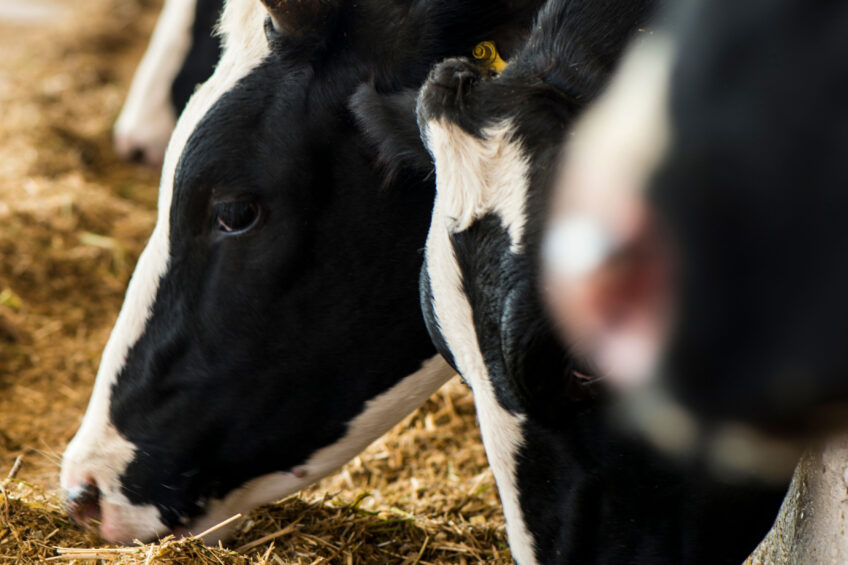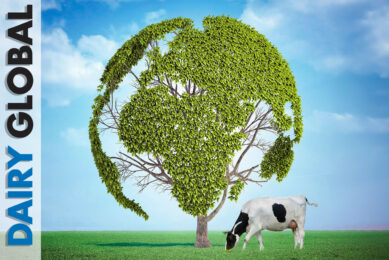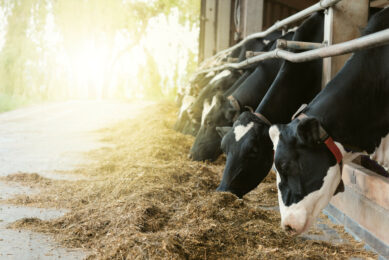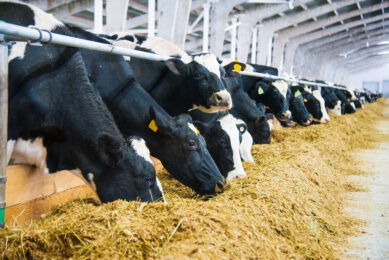Spent hemp biomass as a feed ingredient for dairy cows

Considering the volatility of the conventional feed market, alternative and cost-effective feedstuffs can be highly valuable for the dairy industry. In this newly published study, researchers from Oregon State University highlight how spent hemp biomass, a by-product of cannabidiol production, holds potential as a feed ingredient for the dairy sector.
The cultivation of hemp for the extraction of cannabidiol from the flower and leaves is common in the United States. According to the US National Agricultural Statistics Service, the 2021 value of hemp production in the US totalled US$824 million.
Cannabinoids are typically extracted from the plant matter by a high-pressure and low-temperature procedure that generates spent hemp biomass as a byproduct. A recent study published in the Journal of Animal Science indicates that the nutritive value of spent hemp is similar to that of alfalfa and could safely be fed to finishing lambs at up to 20% in the diet and could increase the antioxidant capacity in the animals.
Other studies have reported hemp to be rich in polyphenols with antioxidant properties and other secondary metabolites with the potential to modulate rumen fermentation, increase nitrogen use efficiency, and reduce methane production.
In their research published in the Journal of Animal Science and Biotechnology, researchers highlighted that the beneficial properties of phytoproducts can help improve the performance and health of high-producing dairy cows, particularly during the transition from pregnancy to lactation where oxidative stress, immune dysfunction, and metabolic stress are common.
In this current study, researchers stated that due to the need for research on hemp byproducts before being legalised as a feed ingredient in the US as advised by the Association of American Feed Control Officials (AAFCO), it is imperative to determine the effects of spent hemp containing high residuals of cannabinoids on production and health aspects of dairy cows. Their full study is published in the Journal of Dairy Science (2024).
Feeding spent hemp
In this study, researchers assessed the effects of feeding spent hemp biomass on several lactation performance and health parameters including feed intake, milk yield and quality, nitrogen metabolism, methane emission and immune status in lactating dairy cows. A total of 18 Jersey cows were fed 2 diets: (i) basal total mixed ration (TMR) diet with 13% DM (dry matter) pelleted spent hemp biomass, and (ii) TMR diet with 13% DM alfalfa pellet (control group) during the experimental period of 4 weeks.
Following the 4 weeks, all cows received only the basal diet for another 4 weeks. This extended period was performed to assess any carryover effect of the spent hemp biomass.
Milk production and milk components
During the experimental period, milk yield was similar between the 2 groups but was higher in the spent hemp group compared to the control group during the withdrawal period, leading to overall higher milk yield/dry matter intake in the spent hemp-fed cows. Milk components were not affected, except for a tendency to decrease fat percentage with the supplementation of spent hemp.
Both energy-corrected milk (ECM) and fat-corrected milk (FCM) were comparable between the 2 groups during the experimental period; however, both ECM and FCM and lactose yield tended to be higher for the spent hemp group during the withdrawal period. On the other hand, feeding spent hemp did not affect the body condition scores and growth of cows. The researchers stated that the lack of an effect on most of the milk components, as observed in similar studies, supports spent hemp biomass as a potential substitute for alfalfa or other forages in dairy animal diets.
Nitrogen metabolism and methane production
The results indicated that, despite the high nutritive quality, feeding spent hemp decreases dry matter intake mainly due to the low palatability of the feed; cows in the spent hemp group consumed about 7% lower dry matter intake compared to cows in the control group. The intake of neutral detergent fibre, acid detergent fibre, crude protein and nitrogen was lower in cows fed the spent hemp compared to control group cows.
However, the researchers highlighted that their previous study in lambs indicated that the long-term voluntary intake of 20% spent hemp biomass was not different to the control diet, suggesting the possibility that cows could also adapt to eating the spent hemp biomass. The urea, purine derivatives, and creatinine concentration in urine were unaffected, but cows fed the spent hemp had higher nitrogen use efficiency and lower urine volume. The daily urinary nitrogen excretion was lower in spent hemp cows only due to a lower daily excretion of ammonia (NH3) (g/d) and urea (g/d), as the concentration of the 2 parameters was almost identical between the 2 groups.
Dry matter digestibility was higher in the spent hemp diet, while CP digestibility was slightly lower in the hemp diet (Table 1). Spent hemp biomass had no significant effect on methane (CH₄) or CO₂ production when expressed as daily emission (g/d) or relative to milk yield or dry matter intake. However, numerical differences showed lower values of CH₄ and CO₂ with supplementation of the spent hemp biomass. The researchers suggested the measurement of volatile fatty acids in the rumen would be necessary to confirm the effect of spent hemp biomass on rumen microbiota and its possible influence on milk production and composition.
Effect on cow health and welfare
Data on immune and oxidative stress parameters indicated that the cows consuming spent hemp biomass experienced minor inflammation and oxidative stress. However, acute inflammation was not present, as haptoglobin, one of the major markers of inflammation remained unchanged with spent hemp supplementation. Blood parameters related to immune function, liver health and inflammatory response were also unaffected.
Commenting on animal welfare, the researchers stated: “We did not notice any obvious change in the cows’ behaviour, as spent hemp did not affect the activity of the cows as shown by similar steps per day, lying times as measured in minutes per bout, and restlessness ratios between groups.”
Long-term goals
The researchers concluded that feeding spent hemp biomass decreases feed intake but does not affect lactation performance or the health of the animals, providing evidence that it might be feasible for inclusion in the diet of lactating dairy cows. They also highlighted that although the US Food and Drug Administration (FDA) has not yet permitted feeding hemp to food animals, “We hope that, with data produced from our study and others, the FDA may recommend some guidelines for feeding hemp to livestock. Our long-term goals are to assess the safety of using hemp byproducts as feed for livestock and to investigate their nutritional and potential medicinal effects on animal health and the quality of animal products,” they said.
This article is based on the original publication: Feeding spent hemp biomass to lactating dairy cows: Effects on performance, milk components and quality, blood parameters, and nitrogen metabolism. Journal of Dairy Science, Vol 107, Issue 1, 2024.
Join 13,000+ subscribers
Subscribe to our newsletter to stay updated about all the need-to-know content in the dairy sector, two times a week.










